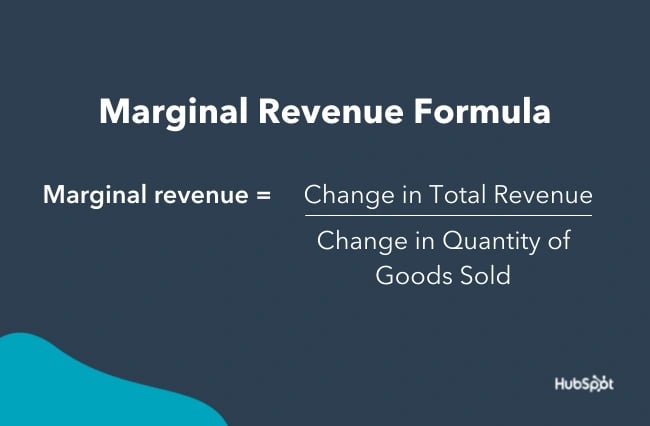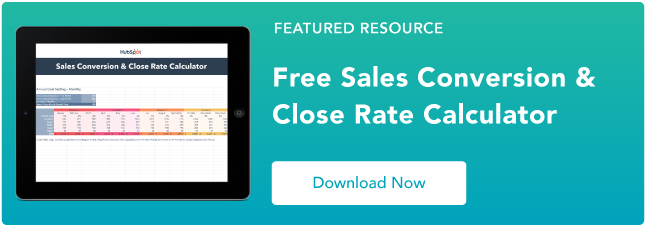If your business were a plant, then total revenue would be the water it needs to grow. Although it's just one metric, it provides valuable insights into your selling strategy, pricing, and business growth.

The statement above may seem obvious, but understanding total revenue and how to record and analyze it is less straightforward.
This metric may be called the bottom line, profit, income, performance, or a number of other terms. Even revenue is divided into total revenue, average revenue, or marginal revenue.
Here, we'll discuss total revenue basics, how to calculate it, and where it differs from marginal revenue.
What is total revenue?
Total revenue, also known as gross revenue, is the amount of money your business generates from selling your products or services during a fixed period.
Generally speaking, most of your revenue will come from sales. However, depending on your business, it could also include donations, lawsuit proceeds, and dividends from investments — although this is rare.
For example, a retail store generates most of its revenue through merchandise sales. However, it may also generate revenue from a secondary source, such as money awarded from litigation.
You can find total revenue on the top line of your income statement. It shows your business's total revenue during a specific accounting period — this can be a month, quarter, or even a year. When a company has "top-line growth," it's seeing an uptick in sales or revenues.
The higher your total revenue, the more revenue your business is generating from its core operation and, ultimately, the more your business is growing. But if you see a decline in this number, it could be a signal to reevaluate your sales strategy, marketing efforts, or pricing model.
Why is total revenue important?
How much money your business is bringing in is the starting point for determining its success. Total revenue reveals how much money is generated before any expenses or deductions. So, this metric lets you know how much the business is making from selling its products or services. Understanding and tracking it is key for evaluating and growing your company.
How to Calculate Total Revenue
The components of calculating the total revenue include the price of each of your business’s products or services and the total amount of each sold. Determine this information and continue to track it so you can watch the changes in total revenue over time. Although things like expenses, fees, or how much it costs to run your business are also important to know, they aren’t a part of calculating revenue.
Here's a great guide for calculating total revenue:
Total Revenue Formula
The formula for Total Revenue is as follows: Number of Products Sold x Price Per Product = Total Revenue

The formula to know your business’ revenue is to multiply the total amount of products or services sold by the price of those products or services. For more in-depth information on your revenue, you can also calculate your average revenue per user. You can use these formulas to create the full picture of your business’ income to improve revenue performance management.
How to Increase Total Revenue
The typical strategy to improve your business’ profit is to decrease expenses and increase revenue. Your expenses may be set or there could be a minimum amount they can reach, but revenue has limitless potential for growth. You can accomplish this by:
- Increasing your number of customers
- Increasing the number of purchases in each transaction, and
- Increasing the frequency of purchases
These are all great ways to boost total revenue. Raising your prices, using effective marketing strategies, and finding ways to incentivize customers will also make a positive impact.
Total Revenue Examples
Retail Store Revenue Example
If your company sells clothing, here’s an example of configuring your total revenue. Let’s say your business sells 10 dresses that each cost $50 and 15 skirts that each cost $20. To calculate the total revenue, you would multiply 10 by $50 and 15 by $20, then add both totals together. The total revenue would be $800.
Number of Products Sold x Price Per Product = Total Revenue
(10 x $50) + (15 x $20) = $800
Consulting Services Revenue Example
If your company sells consulting services, use an hourly rate to calculate revenue. In the formula, think of each hours you worked as the number of "products" sold. If your rate is $50 per hour, and you work with one company for 10 hours and another for 15 hours, multiply your hourly rate by the number hours worked, then add the totals together. The total revenue would be $1250.
Number of Hours Worked x Price Per Hour = Total Revenue
(10 x $50) + (15 x $50) = $1250
Total Revenue and Marginal Revenue
While revenue is one number, there are many different ways to look at it. Let's look at the relationship between total revenue and marginal revenue.
Total revenue is the amount of money a company brings in from selling its goods and services. In other words, company's use this metric to determine how well they're generating money from their core revenue-driving operations.
Marginal revenue directly links to total revenue. It measures the increase — or decrease — in revenue as a result of selling an additional product or service.
As long as the marginal revenue exceeds the cost of producing an additional unit, the total revenue will increase. But if the cost exceeds the marginal revenue, it makes sense to stop production.
To calculate marginal revenue, use the following formula:
Change in the Total Revenue / Change in the Quantity of Goods Sold = Marginal Revenue

For example, suppose a bakery sells birthday cakes — and each cake costs the bakery $5 in materials to make. They sell the cakes for $15, meaning the profit for each cake is $10.
Now, suppose they receive a special order for a custom cake. It still costs $5 to make, but this time they sell it for $20. The profit for the cake is $15 — which is greater than the average profit for other cakes. This is an example of increasing marginal revenue.
Know Your Business’ Total Revenue
There's a reason why total revenue appears on the top line of an income statement. It's a critical figure for business growth — and can inform your selling and marketing strategies and guide you when setting prices. But total revenue is just the starting point — to get an accurate financial picture, businesses should also consider how expenses and operating costs impact the equation.
Editor's note: This post was originally published in January 2022 and has been updated for comprehensiveness.
![Download Now: Sales Conversion Rate Calculator [Free Template]](https://no-cache.hubspot.com/cta/default/53/059a7eef-8ad9-4bee-9c08-4dae23549a29.png)








![The Plain-English Guide to Revenue Run Rate [Infographic]](https://blog.hubspot.com/hubfs/run-rate.jpg)

